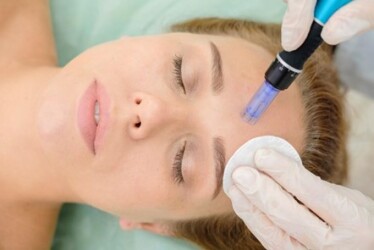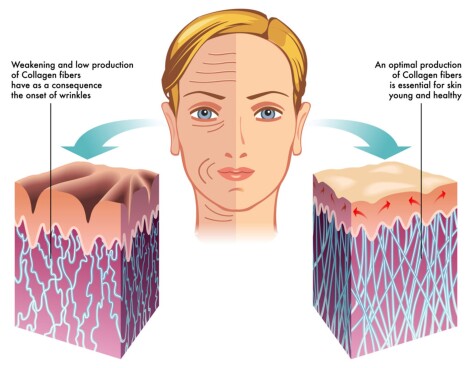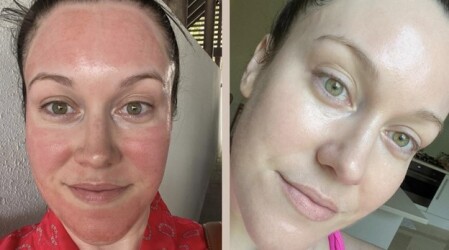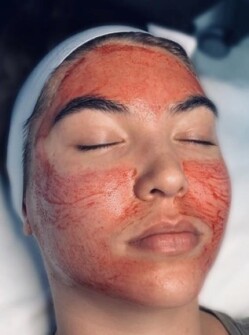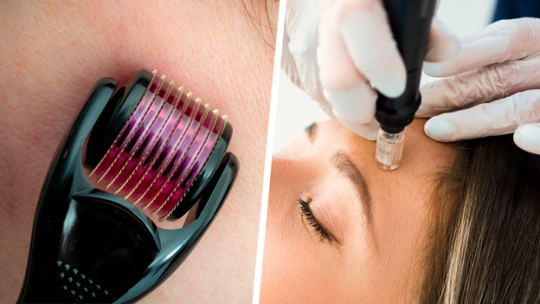Microneedling is a minimally invasive cosmetic procedure that’s used to treat skin concerns by stimulating collagen production. Also known as collagen induction therapy(CIT), this treatment creates micro punctures in the skin using miniature, sterilized needles.
According to the American Academy of Dermatology Association (AAD), the skin’s healing process after microneedling can help reduce the appearance of scars and dark spots as well as improve skin elasticity.
Also, though more research is needed, a reviewTrusted Source suggests that microneedling may promote hair growth in people with alopecia.
You may be an ideal candidate for this procedure if you’re in good health and have certain skin concerns that haven’t responded to home treatments or other types of dermatologic procedures, such as chemical peels.
This may also be a final step before considering more intensive cosmetic procedures. A dermatologist can help you decide if this is the right option for your skin.
Benefits of microneedling
Microneedling has gained popularity for its growing list of benefits. It is said to rejuvenate and plump the skin with minimal discomfort and very little downtime, and it can be adjusted to fit each person’s needs.
Benefits of microneedling can include:
● reducing the appearance of scars, including acne scars
● reducing the appearance of fine lines and wrinkles
● reducing enlarged pores
● reducing the appearance of hyperpigmentation, or dark spots
● smoothing uneven skin tone
● improving skin elasticity
● reducing the appearance of stretch marks
● reducing the appearance of scars
● promoting hair growth in people with alopecia
Microneedling is considerably less expensive than laser therapy and may work better for some people. Laser treatments involve the use of heat, which can affect your skin’s pigmentation.
People with darker skin tones may prefer microneedling to laser therapy because of safety. Research on the effectiveness and safety of using laser treatment on darker skin tones is still lacking.
Targeted areas for microneedling
Microneedling is most often used on the face.
In addition to facial concerns, microneedling is sometimes used to treat stretch marks in other areas of the body. One study found that microneedling was effective for stretch marks on the thighs and abdominal area when combined with fillers and carboxy therapy.
Scarring on other body parts may also be treated with this procedure.
How does microneedling work?
Microneedling works by encouraging your skin to make more collagen. The pinpricks from the procedure cause slight injury to the skin and the skin responds by making new collagen-rich tissue.
This new skin tissue is more even in tone and texture. It’s common for the skin to lose collagen with age or injury. By encouraging the skin to make new tissue, additional collagen may help make the skin firmer.
Microneedling may also be combined with topical serums, radiofrequency, and platelet-rich plasma. A dermatologist can help you navigate the decisions regarding additional treatment options and their estimated costs.
Preparing for microneedling
Before the procedure, consider talking with the dermatologist about ways to prepare for your appointment. You may need to stop taking certain medications, such as ibuprofen, well in advance of the procedure.
It’s also recommended that you avoid using agents that may increase the sensitivity of your skin. Your dermatologist may recommend that you stop using topical retinoids and exfoliants before your microneedling appointment.
Procedure for microneedling
During the procedure, a dermatologist makes small pricks under the skin using a pen-like tool with tiny, sterilized needles. The pinpricks are so small that you likely won’t notice them after the procedure.
The dermatologist typically moves the tool evenly across your skin so that the newly rejuvenated skin will be even, too.
Approximately 30 minutes before the procedure, the dermatologist will apply a topical anesthetic to the treatment area. This will numb the skin during the microneedling process, which takes approximately 15-30 minutes.
The doctor may then finish your session by applying a growth serum or calming treatment. In total, the average microneedling session lasts approximately 45-60 minutes.
What to expect after microneedling
Microneedling isn’t as invasive as plastic surgery, and the recovery time is minimal. Most people require very little downtime if any at all.
You may notice skin irritation and redness within the first few days following the procedure. This is a natural response to the small injuries made by the needles in your skin.
You can go back to work after the procedure if you’re comfortable. It’s best to let your skin heal before applying makeup. However, once the appropriate time has passed, camouflaging makeup can help disguise the redness as it dissipates.
Your skin will also be more sensitive to the sun, so be sure to apply sunscreen. Still, it’s recommended that you wait 1 week before exposing your skin to sunlight and harsh chemicals.
After microneedling, your skin works fairly quickly to rejuvenate new tissue. In theory, you should see results within 2 weeks.
To maintain the results of your treatment, you’ll need multiple sessions and perhaps other complementing treatments. The dermatologist will work with you to develop a plan of action based on your individual goals.
Microneedling / home rollers
Microneedling is a professional procedure that’s performed in a board certified dermatologist’s office. In an effort to save money, some people opt for home derma rollers instead. Unlike professional microneedling, home rollers don’t puncture the skin to layers deep enough to draw blood.
While this might seem a less painful option, you may not achieve the same results. The punctures made during professional microneedling are designed to induce skin rejuvenation. With a roller device, you may achieve brighter skin at best.
If you’re interested in more effective and long-term results, microneedling may be a better option than a store bought roller device. You may still choose to try the latter version if you want less invasive (and more temporary) results.
Are there any risks or side effects?
Like all cosmetic procedures, microneedling carries some risks. The most common side effect is minor skin irritation immediately following the procedure. You may also see redness for a few days.
Call your doctor if you notice more severe side effects, such as:
● bleeding
● bruising
● infection
● peeling
You may not be an ideal candidate for microneedling if you:
● have certain skin conditions, such as psoriasis or eczema
● have open wounds or active acne
● have had radiation therapy recently
● have a history of skin scars
People who are pregnant may need to be cleared by an obstetrician or gynecologist before the treatment.
What is the optimal care for skin after microneedling?
Since your skin channels are open and sensitive after your procedure, it’s best to avoid the following during your first week of recovery :
● sun exposure
● skin care products with alpha hydroxy acids and retinol
● makeup
● sweating
You can help your skin heal after microneedling by:
● staying hydrated
● using an antioxidant serum
● using a cooling mask
● using collagen stimulating peptides
How long does microneedling last?
Results may vary based on the severity of the skin concern, its location, and the treatment plan used.
A dermatologist may recommend 4-6 treatment sessions. The skin may continue increased collagen production for 3-6 months after microneedling treatment.
How many sessions of microneedling do I need for acne scars?
Treatment plans vary from person to person, but research has shown mild improvement in post acne scarring after just 2 microneedling sessions.
After 6 sessions, people saw moderate improvement in their skin texture and good enhancement of scar appearance.
How long do microneedling results last?
In general, you can expect the results of microneedling treatments to last for about 3-5 months. The longevity of the results depends on 2 factors; 1. how long new collagen lasts in your skin and 2. the degree of your skin concerns.
Is microneedling better than Botox?
Why do my wrinkles look worse after microneedling?
In the short term, lines can appear worse for the first few days after a treatment due to transepidermal water loss (TEWL). Any wrinkle that develops quickly is not due to loss of structural integrity and it is temporary.
Do and don'ts after microneedling?
Apply sunscreen daily and you can use makeup if needed starting the day after treatment. First Week of Healing: Keep treated area clean; avoid smoking, excessive alcohol consumption, excessive exercise, sweating, swimming, or exposing skin to heat and sun.
rubbing, or using exfoliants for 1 week.
What does your face look like after microneedling?
Patients can expect their skin to look red immediately after a microneedling treatment. This is because of increased blood flow to the skin as part of the body's natural wound healing response to the ultrafine needles of the microneedling handpiece that have penetrated the skin's surface.

